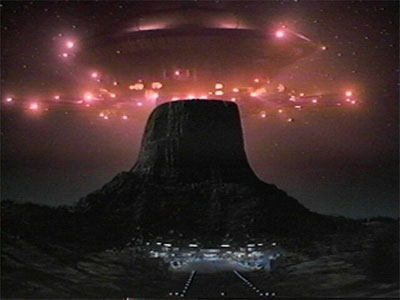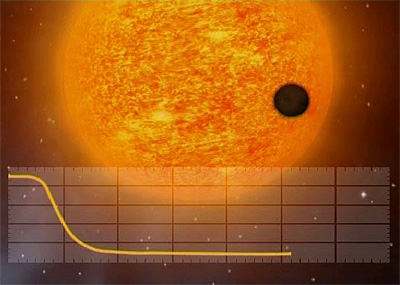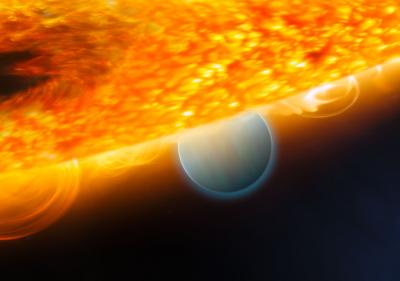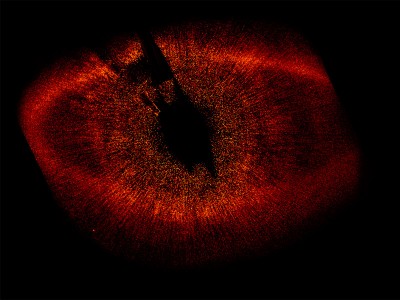Posted by Michael Pinto on Feb 16, 2009 in
Science 
It was only less than a few weeks ago that we reported that Astrophysicist Duncan Forgan had boldly calculated that there are about 40,000 planets that would support intelligent life — well like a free nerd upgrade Dr. Alan Boss of the Carnegie Institution of Science now claims that our galaxy could have billions of earth-like planets! Boss’s thinking is that each Sun-like star has on average one “Earth-like” planet, although sadly he wouldn’t go on the record like Forgan and take his math to the next level to make predictions about intelligent life. In fact on the negative side (or positive?) Boss feels that many of these planets are in primitive states and are populated by less advanced life forms like bacteria. But up on the up side Dr. Boss thinks that NASA’s Kepler mission might begin to spot earth-like planets in just a few years.
Tags: Astronomy, Exoplanet, extraterrestrials
Posted by Michael Pinto on Feb 6, 2009 in
Science 
Our galaxy is big, really big — so the odds are in our favor that Earth is not a fluke. Of course this thinking is old news at this point, however what’s new is that astrophysicists are starting to crunch numbers on the subject based upon what we currently know from the field of astronomy. Once such fellow is Astrophysicist Duncan Forgan who has been crunching the numbers based on what we know about the currently discovered 330 known exoplanets. His estimate took into account factors like temperature, availability of water (so yes it’s “life as we know it”) and the size of the Milky Way. Read more…
Tags: Astronomy, Exoplanet, extraterrestrials
Posted by Michael Pinto on Feb 4, 2009 in
Science 
While this planet is about twice the size of Earth it’s amazing to think of the progress that astronomers have made in just the past few years. I wouldn’t be surprised if in the next few years we discovered a solar system that’s similar to own own. This latest exoplanet was detected by looking for a drop in brightness of the parent star as the planet passed in front of the star: During this transit the planet appears as a tiny black dot. There’s some controversy to the exact size of the planet, but to me what’s exciting is that we’re getting better at spotting the small one.
Tags: Astronomy, Exoplanet
Posted by Michael Pinto on Dec 10, 2008 in
Science 
It’s amazing how every day we find more and more obvious clues that there may be other signs of life in he universe. This latest discovery shows that astronomers have detected carbon dioxide (a basic requirement for plants to perform photosynthesis) on a Jupiter sized planet. What’s great about this is that someday this technique may used to hunt for hints of life on an Earth like planet: Read more…
Tags: Astronomy, Exoplanet, Hubble, NASA
Posted by Michael Pinto on Nov 14, 2008 in
Science 
While the photo above looks pretty, it’s no ordinary snapshot — in fact within the red dust is the very first photo of a planet that’s outside of our solar system. Read more…
Tags: Astronomy, Exoplanet, NASA


















